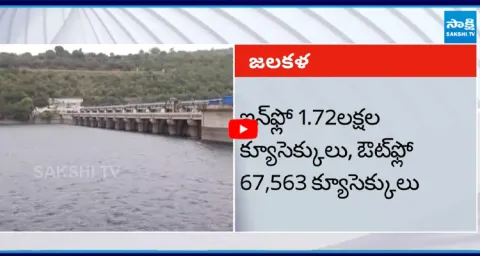How many such pairs of letters are there in the word BEHA- VIOUR each of which has as many letters between them in the word as in the English alphabet?
REASONING ABILITY
121. How many such pairs of letters are there in the word BEHA- VIOUR each of which has as many letters between them in the word as in the English alphabet?
1) None 2) One
3) Two 4) Three
5) More than three
122. How many such digits are there in the number 764528 each of which is as far away from the beginning of the number as when the digits are arranged in descending order within the number?
1) None 2) One
3) Two 4) Three
5) More than three
123. What should come next in the letter series given below?
ABABCABCDABCDE ABCDEFABCDEFGABC
1) D 2) E 3) F
4) H 5) None
124. How many meaningful English words can be made with the letters EPRY using each letter only once in each word?
1) None 2) One 3) Two 4) Three 5) More than three
125. J. D. L. H and F each travelling to station, each one reaches at a different time. L reaches only after J and D reaches only before F. Who among them is third to reach?
1) F 2) L 3) D
4) Can't be determined
5) None
126. Four of the following five are alike in a certain way and so form a group. Which is the one that does not belong to that group?
1) 21 2) 35 3) 42 4) 56 5) 49
127. In a certain code ALIVE is written as WFHBM. How is VALUE written in that code?
1) VFMWB 2) VFKWB
3) WBAVF 4) WBKVF
5) None
128. The letters in the word DANGEROUS are changed in such a way that the consonants are replaced by the previous letter in the English alphabet and the vowels are replaced by the next letter in the English alphabet. Which of the following will be the third letter from the left end of the new set of letters?
1) B 2) M 3) O
4) L 5) None
129. Four of the following five are alike in a certain way and so form a group. Which is the one that does not belong to that group?
1) Table 2) Desk 3) Wardrobe
4) Computer 5) Chair
130. Four of the following five are alike in a certain way and so form a group. Which is the one that does not belong to that group?
1) Orange 2) Apple 3) Guava
4) Papaya 5) Mango
Directions (Q. 131-135): In each of the questions below are given three statements followed by two conclusions numbered I and II. You have to take the given statements to be true even if they seem to be at variance from commonly known facts. Read all the conclusions and then decide which of the given conclusions logically follows from the given statements disregarding commonly known facts.
Give answer:
1) If only Conclusion I follows.
2) If only Conclusion II follows.
3) If either Conclusion I or II follows.
4) If neither Conclusion I nor II follows.
5) If both Conclusions I and II follow.
131. Statements:
Some doors are windows.
All windows are floors.
All floors are ceilings.
Conclusions:
I. Some doors are floors.
II. All windows are ceilings.
132. Statements:
Some computers are books.
Some books are pens.
All pens are notebooks.
Conclusions:
I. Some books are notebooks.
II. Some notebooks are computers.
133. Statements:
All fruits are flowers.
No flower is sweet.
Some sweets are desserts.
Conclusions:
I. Some desserts are flowers.
II. No dessert is flower.
134. Statements:
All bottles are jars.
Some jars are bowls.
Some bowls are buckets.
Conclusions:
I. Some bottles are bowls.
II. Some buckets are jars.
135. Statements:
Some shoes are socks.
All socks are sandals.
All sandals are trousers.
Conclusions:
I. All trousers are socks.
II. Some sandals are shoes.
Directions (136-140): Study the following arrangement carefully and answer the questions given below:
HT7LE$2Y#W4IF@V3A 8%K1M©5GU6C
136. Which of the following is the fifth to the left of the fourteenth from the left end of the above arrangement?
1) # 2) W 3) Y
4) K 5) None
137. How many such vowels are there in the above arrangement, each of which is immediately preceded by a number but not immediately followed by a symbol?
1) None 2) One 3) Two
4) Three 5) More than three
138. Four of the following five are alike in a certain way based on their positions in the above arrangement and so form a group. Which is the one that does not belong to that group?
1) H E 7 2) 2 4 # 3) K 5 M
4) 3 K 8 5) F V A
139. How many such consonants are there in the above arrangement, each of which is immediately preceded by a number and also immediately followed by a symbol?
1) None 2) One 3) Two
4) Three 5) More than three
140. What should come in place of the question mark (?) in the following series based on the above arrangement?
T 7 E Y #4 @ V A
1) KM© 2) %KM 3)% 1M
4) K1 © 5) None
Directions (Q.141-145): Study the following information carefully and answer the questions given below:
M, D, J, Q, T, F, H and N are sitting around a circle facing at the center. T is third to the right of F who is second to the left of M. Q is not a neighbor of T or F and is third to the left of H. J is second to the right of N.
141. Who is second to the left of H ?
1) T 2) F 3) Q
4) Data inadequate 5) None
142. Who is to the immediate left of M?
1) H 2) T 3) Q
4) J 5) None
143. In which of the following pairs the second person is to the immediate left of the first person?
1) MT 2) NQ 3) HF
4) DN 5) None
144. What is Q's position with respect to M?
I. Fourth to the right
II. Fourth to the left
III. Fifth to the left
IV. Fifth to the right
1) I only 2) II only
3) Either III or IV
4) I and II only
5) None
145. Who is second to the right of T?
1) M 2) H 3) Q
4) Data inadequate 5) None
Directions (Q.146-150): In each question below is given a group of letters followed by four combinations of digits/ symbols numbered (1), (2). (3) and (4). You have to find out which of the combinations correctly represents the group of letters based on the following coding system and mark the number of that combination as the answer. If none of the four combi-nations correctly represents the group of letters, mark (5). i.e., None as the answer.
Conditions:
I) If both the first and the last letters of the group are vowels, their codes are to be interchanged.
II) If the first letter is a consonant and the last letter is a vowel, both are to be coded by the code for the consonant.
146. JQGALI
1) 32#893 2) 52#893
3) 52#895 4) 32#895
5) None
147. EBHRMT
1) %@$ 16© 2) %$@ 16©
3) 6$@1©% 4) ©$@ 16%
5) None
148. IGCHRE
1) %#*@13 2) 3#*® 1%
3) 3#*@ 13 4) %# *@%
5) None
149. BQRLHA
1) $219@8 2) 8219@$
3) 8219@8 4) $219@$
5) None
150. QRLGHM
1) 219#@2 2) 619#@6
3) 619#@2 4) 619@#2
5) None
121) 3; 122) 2; 123) 1; 124) 3;
125) 5; 126) 5; 127) 2; 128) 2;
129) 4; 130) 5; 131) 5; 132) 1;
133) 3; 134) 4; 135) 2; 136) 1;
137) 3; 138) 5; 139) 3; 140) 4;
141) 5; 142) 1; 143) 3; 144) 4;
145) 5; 146) 3; 147) 2; 148) 1;
149) 4; 150) 5.













